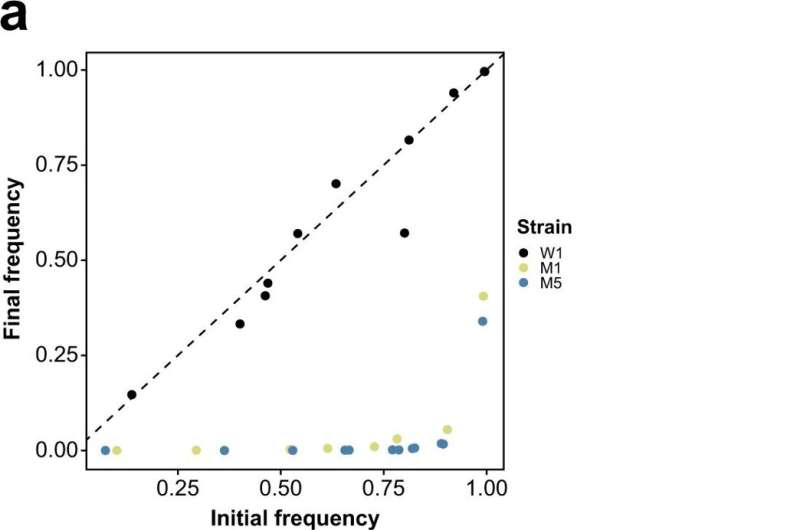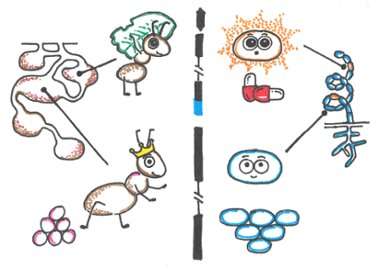Collaborating bacteria sacrifice themselves for the greater good

Like ants, termites and bees, some bacteria work together as a multicellular group. There is a strict division of labor in such colonies, to make the group more resilient to the outside world. Now researchers have found that some parts of the bacterial colony can take "for the greater good" to a whole new level. Their study is published in Nature Communications.
"In the lab we work with Streptomyces, which are unusual bacteria that are famous as antibiotic producers. However, they are also famous because of their multicellular growth, and their division of labor within that colony," explains Daniel Rozen, associate professor at the Institute of Biology Leiden (IBL). "Some parts are responsible for feeding, some for reproduction, and so forth. Also, we recently found that a part of the colony focuses on the production of antibiotics. They protect the community from hostile or competing bacteria."
The abundance of antibiotics these bacteria produce is remarkable. "It costs a lot of energy, and they basically harm themselves because of it," Rozen says. "Zheren Zhang, a joint Ph.D. candidate with professor Dennis Claessen and me, set out to investigate. Why do they do this? We wanted to see if there is any resemblance between Streptomyces and social insects, such as bees and ants. In such colonies, workers do paramount tasks for the greater good, but also die without reproducing. This is called altruism."

Accelerating evolution
To test the extent of altruism in these bacteria, the researchers accelerated evolution by growing the antibiotic-producers in an environment without competition. As bacteria can multiply themselves, it was possible to start with one cell, and cultivate it into a group of millions of cells. From that group, once more a single bacterial cell was taken into a new environment and grown again into a new group. By repeating this process 25 times, it was possible to see what would happen in the long term.
"You magnify the changes occurring in the DNA," Rozen explains. "And these are very interesting. Changes in the DNA are called mutations, and include small alterations or large removals of parts of the bacterial DNA. Normally, mutations are noticed by cells and mechanisms repair it, as too many differences in the DNA can be harmful or potentially lethal. But the repair mechanisms became defective for the antibiotic-producing Streptomyces. Cells rapidly became more and more sick. This also meant that they were less reproductively capable than the original Streptomyces, which basically means that they become sterile like worker-bees or ants."
What Rozen and the research group concluded, is that Streptomyces colonies have evolved a division of labor that has strong similarities with social insects. "And although altruism and division of labor is pretty well understood in social insects, there are an increasing number of bacterial species in which altruism is found. Our discovery will help to understand the genetic basis of altruism, and what drives these organisms to behave the way they do."
More information: Zheren Zhang et al, Mutational meltdown of putative microbial altruists in Streptomyces coelicolor colonies, Nature Communications (2022). DOI: 10.1038/s41467-022-29924-y
Journal information: Nature Communications
Provided by Leiden University





















